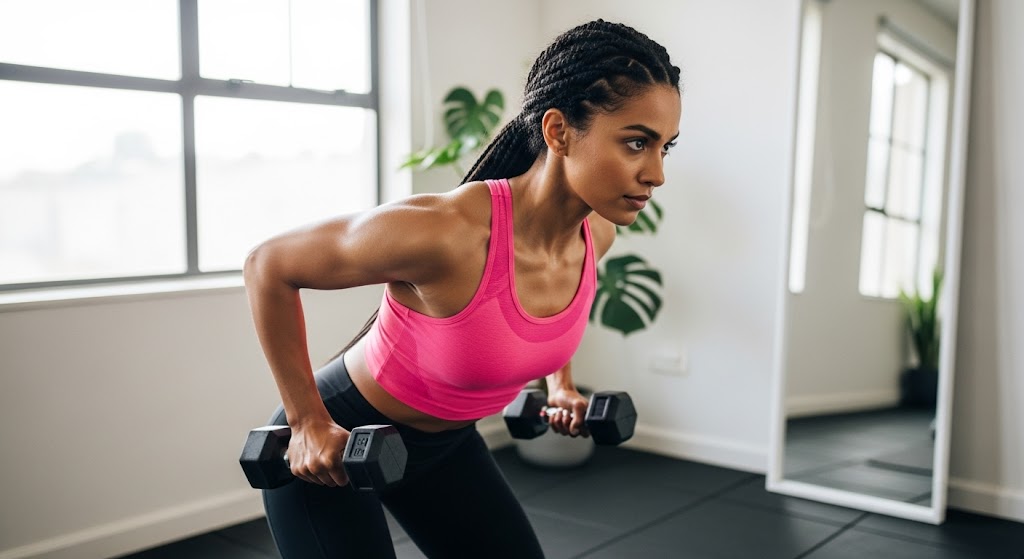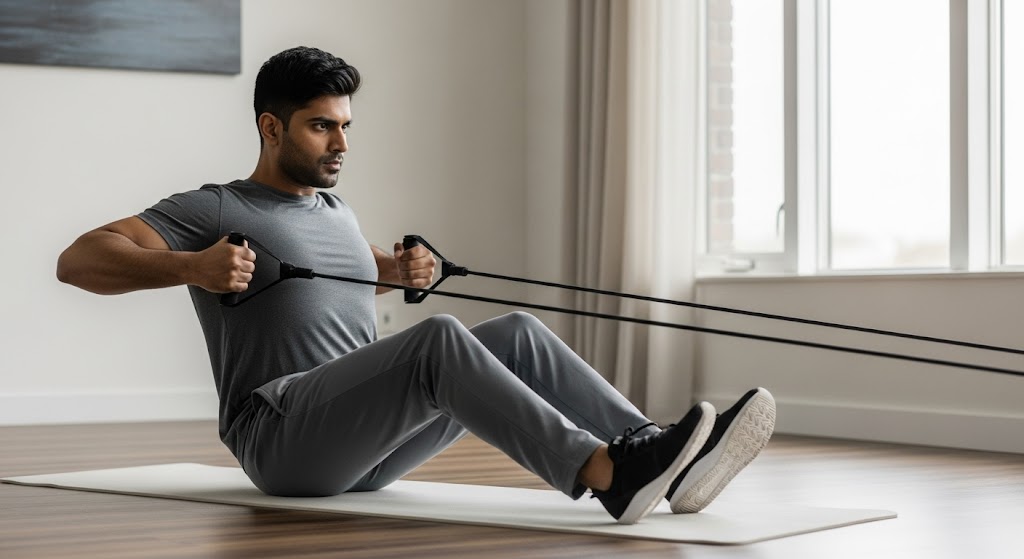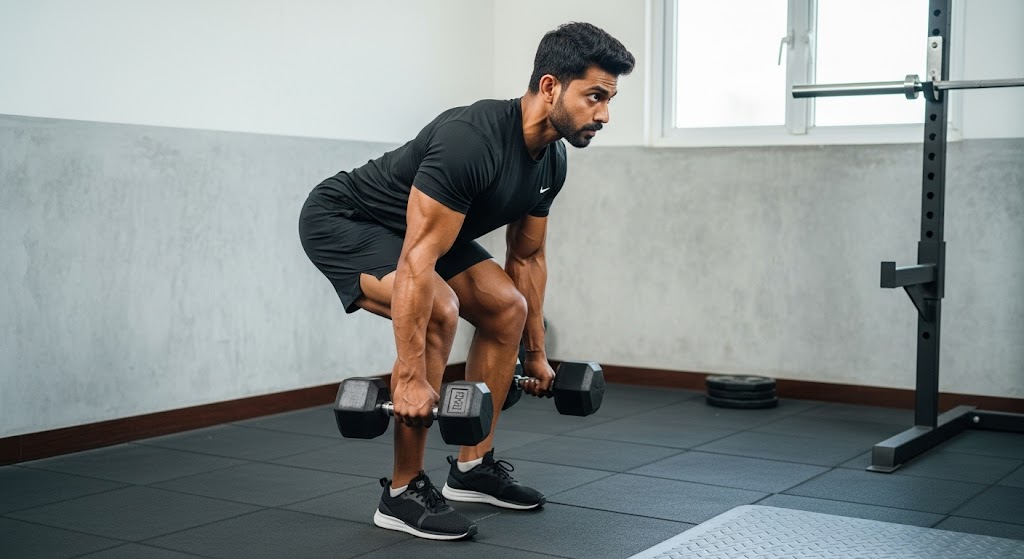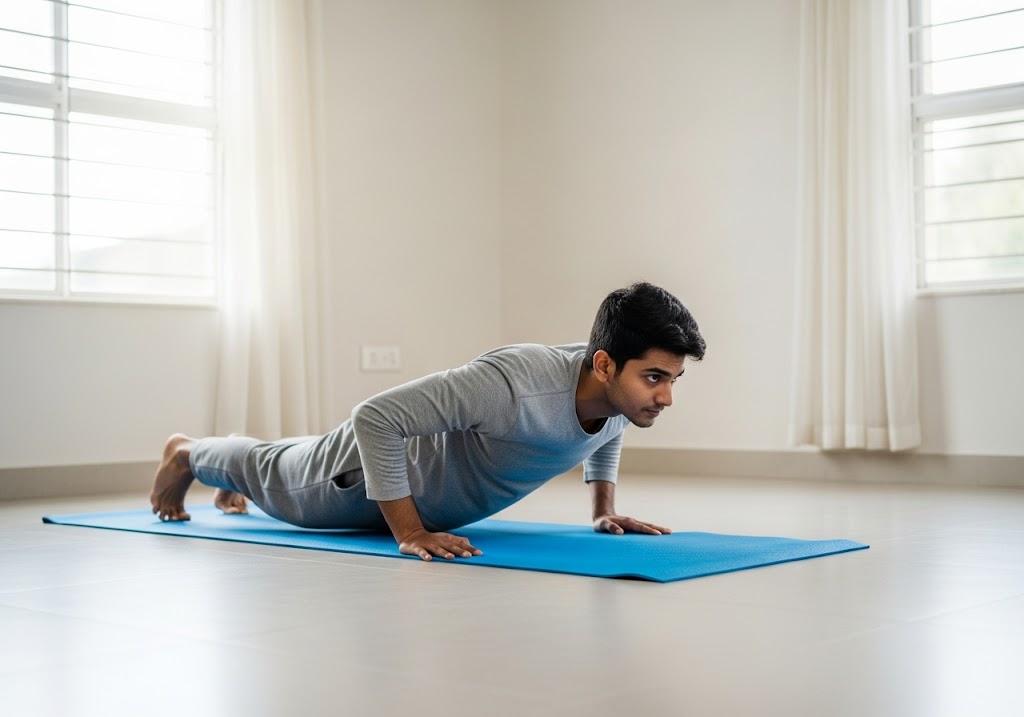8 Best Exercises to Get a Wider Back are: Pull-ups for lats, Lat Pulldowns for upper back, Wide-Grip Rows for thickness, T-Bar Rows for mid traps, Cable Rows for rhomboids, Reverse Flyes for rear delts, Face Pulls for posture, and Deadlifts for full back strength.
Want to know how to get a wider back that creates an impressive V-taper and commanding presence? Building back width requires targeted exercises, proper form, and consistent training that focuses on the latissimus dorsi muscles. This complete plan reveals exactly how to get a bigger back using proven techniques that deliver real width and strength results.
To develop a wider back, focusing on exercises that target the latissimus dorsi (lats), teres major, and teres minor is key, as these muscles contribute most to back width. Incorporating both vertical and horizontal pulling movements into your back workouts is essential for stimulating growth in these areas. It’s also crucial to maintain proper form during exercises, focus on a full range of motion, progressively overload your workouts, and prioritize adequate nutrition and recovery.
Table of Contents
How to Get a Wider Back?
Building back width requires understanding the specific muscles involved and how to target them effectively. The latissimus dorsi muscles create the majority of back width, extending from your arms down to your lower back. These large muscles respond well to pulling exercises performed with proper form and progressive overload principles.
Consistency with training frequency and exercise selection determines success in how to get a wider back development. Focus on compound pulling movements that allow for heavy loading while maintaining perfect form throughout each repetition. Progressive overload through increased weight, repetitions, or training frequency ensures continued muscle growth and strength development.
For comprehensive upper body development, compound dumbbell exercises provides additional exercises that support back width training goals.
8 Exercises for How to Get a Wider Back
These eight proven exercises represent the most effective movements for building back width and creating the coveted V-taper physique. Each exercise targets the latissimus dorsi from different angles while supporting overall back development and strength.
| Exercise | Primary Target | Secondary Benefits | Equipment Needed | Difficulty Level |
| Pull-ups | Lats, Upper Back | Grip strength, core | Pull-up bar | Intermediate |
| Lat Pulldowns | Lats, Rhomboids | Biceps, rear delts | Cable machine | Beginner |
| Wide-Grip Rows | Mid traps, Lats | Posture, thickness | Barbell/Dumbbells | Intermediate |
| T-Bar Rows | Lats, Mid traps | Lower traps, biceps | T-bar/Landmine | Intermediate |
| Cable Rows | Lats, Rhomboids | Biceps, rear delts | Cable machine | Beginner |
| Reverse Flyes | Rear delts, Traps | Posture correction | Dumbbells/Cables | Beginner |
| Face Pulls | Rear delts, Traps | Shoulder health | Cable machine | Beginner |
| Deadlifts | Entire back | Full body strength | Barbell | Advanced |

1. Pull-ups
Pull-ups form the foundation of how to get a wider back, targeting the latissimus dorsi through full range of motion. Focus on wide grip positioning and controlled movement to maximize lat activation. Start with assisted variations if needed, progressing to bodyweight and eventually weighted pull-ups for continued growth and strength development.
2. Lat Pulldowns
Lat Pulldowns provide excellent back width development with adjustable resistance perfect for beginners learning how to get a bigger back. Use wide grip positioning and focus on pulling your elbows down and back rather than using your arms. This movement allows for controlled progression and perfect form development.
3. Wide-Grip Rows
Wide-Grip Rows target the middle trapezius and latissimus dorsi while building back thickness that complements width development. Perform with barbells or dumbbells, focusing on squeezing shoulder blades together at the top of each repetition. This exercise is essential for complete back development and improved posture.
4. T-Bar Rows
T-Bar Rows provide unique angle of pull that targets lats and middle traps effectively for both width and thickness. The fixed bar path allows for heavy loading while maintaining proper form throughout the movement. This exercise builds the foundation strength needed for how to get a wider back goals.
5. Cable Rows
Cable Rows offer constant tension throughout the entire range of motion, making them perfect for muscle building and definition. Use various grip positions to target different areas of the back while maintaining perfect form. This versatile exercise works well for both beginners and advanced lifters.
6. Reverse Flyes
Reverse Flyes target the often-neglected rear deltoids and upper traps that contribute to overall back width appearance. This exercise improves posture and shoulder health while adding width to the upper back region. Perform with light weights focusing on perfect form and full range of motion.
7. Face Pulls
Face Pulls provide essential rear deltoid and upper trap development while improving shoulder health and posture. This exercise helps balance the pulling and pushing movements while contributing to the overall back width development. Include face pulls in every back workout for optimal results.
8. Deadlifts
Deadlifts work the entire posterior chain, building massive strength and muscle throughout the back, glutes, and hamstrings. While not specifically a width exercise, deadlifts provide the foundation strength needed for all other back exercises. Master proper form before increasing weight significantly.
For those interested in bodyweight alternatives that complement back training, exploring basic calisthenics workout provides excellent foundation exercises for back development.

Tips for Building a Wider Back
These practical tips accelerate your progress toward impressive back width by addressing common mistakes and optimizing training efficiency. Each tip targets specific aspects of how to get a bigger back while providing actionable strategies you can implement immediately for better results.
- Focus on Mind-Muscle Connection: Concentrate on feeling your lats working during each repetition rather than just moving weight from point A to point B
- Use Full Range of Motion: Complete full stretches and contractions to maximize muscle fiber recruitment and stimulate growth throughout the entire muscle
- Progressive Overload Consistently: Gradually increase weight, repetitions, or training frequency to continue challenging muscles and promoting growth over time
- Prioritize Form Over Weight: Perfect technique ensures maximum muscle activation while preventing injury that could halt progress for weeks or months
- Train Back Twice Weekly: Higher frequency allows for more growth stimulus while providing adequate recovery time between intense training sessions
- Include Unilateral Exercises: Single-arm movements help identify and correct imbalances while providing unique growth stimulus for each side independently
Understanding proper preparation is crucial, so implementing warm up exercises for beginners ensures safe and effective training sessions.

The 5 Best Lat Exercises For Building A Bigger, Wider Back
These five exercises specifically target the latissimus dorsi muscles responsible for back width and V-taper development. Focus on these movements to maximize your results in how to get a wider back and shoulders while building impressive upper body strength and muscle mass.
| Exercise | Grip Position | Rep Range | Sets | Rest Period | Focus Point |
| Wide-Grip Pull-ups | 1.5x shoulder width | 6-12 reps | 3-4 sets | 2-3 minutes | Lat stretch and contraction |
| Wide-Grip Lat Pulldowns | 1.5x shoulder width | 8-15 reps | 3-4 sets | 90 seconds | Controlled negative |
| Single-Arm Dumbbell Rows | Neutral grip | 10-15 reps | 3-4 sets | 60 seconds | Unilateral development |
| Cable Lat Prayers | Wide grip | 12-20 reps | 2-3 sets | 60 seconds | Peak contraction |
| Straight-Arm Pulldowns | Shoulder width | 12-15 reps | 2-3 sets | 60 seconds | Lat isolation |
For those seeking advanced training methods, advanced calisthenics routine provides challenging progressions for experienced athletes.
Warnings on How to Get a Wider Back?
Avoiding these common mistakes and safety concerns ensures steady progress while preventing injuries that could derail your back width development goals. Understanding potential pitfalls helps maintain consistent training and optimal results in your quest for how to get a wider back.
- Avoid Ego Lifting: Using too much weight compromises form and reduces lat activation while significantly increasing injury risk to shoulders and lower back
- Don’t Neglect Warm-up: Cold muscles are more prone to strains and tears, especially during heavy pulling movements that stress multiple joints
- Prevent Shoulder Impingement: Poor form during overhead pulling can cause shoulder problems that limit training capacity for weeks or months
- Address Muscle Imbalances: Focusing only on pulling exercises without balancing with pushing movements can create posture problems and injury risk
- Monitor Recovery Signs: Persistent soreness, decreased performance, or joint pain indicates need for additional rest or modified training approach
- Maintain Proper Progression: Advancing too quickly in weight or volume can lead to overuse injuries that significantly impact long-term progress
Lat exercises for a wider back
The “lats” or latissimus dorsi are the large, wing-shaped muscles that run from your upper arms down to your lower back on both sides of your body. These are the primary muscles responsible for back width and creating the coveted V-taper appearance. When well-developed, your lats make your waist appear smaller and give you that powerful, athletic look from behind.
Specific lat-focused exercises form the core of any effective program for how to get a bigger back at home or in the gym. These movements target the latissimus dorsi through various angles and grip positions to maximize muscle fiber recruitment and growth stimulus.
The latissimus dorsi responds well to both vertical and horizontal pulling movements, requiring variety in exercise selection for complete development. Vertical pulls like pull-ups and pulldowns emphasize width, while horizontal pulls like rows build thickness and complement the width development for balanced back growth.
For those training at home, bodybuilding exercises at home provides equipment-free alternatives for back development.

Anatomy of the back muscles
Understanding back muscle anatomy helps create more effective training programs for how to get a wider back and chest development. The back consists of multiple muscle groups that work together to create width, thickness, and functional strength for daily activities and athletic performance.
The latissimus dorsi creates the majority of back width, originating from the lower spine and inserting into the upper arm bone. These large muscles respond well to pulling exercises performed through full range of motion with progressive overload. Other supporting muscles include the rhomboids, middle traps, and rear deltoids that contribute to overall back development.
| Muscle Group | Primary Function | Width Contribution | Best Exercises |
| Latissimus Dorsi | Arm adduction, extension | Maximum width | Pull-ups, pulldowns |
| Rhomboids | Scapular retraction | Upper back thickness | Rows, reverse flyes |
| Middle Trapezius | Scapular adduction | Mid-back width | Wide-grip rows |
| Rear Deltoids | Shoulder extension | Shoulder width | Face pulls, reverse flyes |
| Lower Trapezius | Scapular depression | Posture support | Y-raises, pulldowns |
For comprehensive back training variety, full body calisthenics workout includes multiple pulling variations.
Training Frequency and Additional Considerations on How to Get a Wider Back
Optimal training frequency for back width development balances growth stimulus with adequate recovery time. Most people achieve best results training back 2-3 times per week, allowing 48-72 hours between intense sessions. This frequency provides sufficient stimulus while preventing overuse injuries and maintaining consistent progress.
Additional considerations include nutrition timing, sleep quality, and stress management that all impact muscle growth and recovery. Proper protein intake, adequate hydration, and consistent sleep schedule support the intensive training required for how to get a wider back and shoulders development.
| Training Variable | Beginner | Intermediate | Advanced |
| Frequency | 2x per week | 2-3x per week | 3-4x per week |
| Volume | 10-14 sets | 14-20 sets | 20-25 sets |
| Intensity | 65-75% 1RM | 70-85% 1RM | 75-90% 1RM |
| Rest Between Sets | 60-90 seconds | 90-120 seconds | 2-3 minutes |
| Exercise Selection | 3-4 exercises | 4-6 exercises | 6-8 exercises |
Understanding nutrition support is crucial, so exploring calisthenics diet chart provides dietary strategies for muscle building.

How to Get a Bigger Back at Home?
Training at home for back width requires creativity with equipment and exercise selection, but significant results are achievable with bodyweight movements and minimal equipment. Pull-ups remain the king of home back exercises, requiring only a sturdy pull-up bar for effective lat development and strength building.
Resistance bands provide excellent alternatives for lat pulldowns and rowing movements when combined with creative anchoring points. These portable tools allow for variable resistance and multiple grip positions that target different areas of the back effectively. Consistency with home training often exceeds gym results due to convenience and time efficiency.
For specialized pull-up technique development, calisthenics grip pull up provides detailed grip variations for maximum back development.
How to Get a Wider Back and Shoulders?
Combining back and shoulder width development creates the impressive V-taper that dramatically improves upper body appearance. The shoulder muscles, particularly the lateral deltoids, work synergistically with the lats to create maximum width and improve the waist-to-shoulder ratio for both men and women seeking athletic physiques.
Shoulder width training complements lat development through exercises like lateral raises, overhead pressing, and rear deltoid work. This combination approach ensures balanced development while preventing muscle imbalances that could limit progress or create injury risk over time.
For targeted arm development that complements back training, arm workout at home with dumbbells provides supporting exercises for complete upper body development.

How to Get a Wider Back and Chest?
Developing both back width and chest size creates balanced upper body development that looks impressive from all angles. While these muscle groups work in opposition during movement, training both ensures structural balance and prevents postural problems that can develop from overemphasizing one area.
The combination of back width and chest development requires balanced programming that includes both pulling and pushing exercises in equal volume. This approach maintains shoulder health while maximizing muscle growth in both regions for complete upper body transformation and functional strength development.
For cardiovascular conditioning that supports muscle building, hiit workout in mumbai provides intense training options.

Common Mistakes When Learning How to Get a Wider Back
Avoiding these frequent errors accelerates your progress while preventing frustration and potential injuries. Many people sabotage their back width development through these mistakes without realizing their impact on muscle growth and overall training effectiveness.
- Using Momentum: Swinging or bouncing during exercises reduces muscle tension and limits growth while increasing injury risk significantly
- Partial Range of Motion: Shortened movements prevent full muscle fiber recruitment and limit the stretch that stimulates growth hormone release
- Neglecting Grip Strength: Weak grip limits performance on all pulling exercises, preventing adequate stimulus for lat development and growth
- Inconsistent Training: Sporadic workouts prevent the consistent stimulus needed for muscle adaptation and progressive strength development over time
- Poor Exercise Order: Placing isolation exercises before compounds reduces performance on the most important movements for back width development
- Ignoring Progressive Overload: Using the same weights and repetitions prevents continued adaptation and muscle growth beyond initial beginner gains
Understanding training comparisons helps optimize your approach, so exploring calisthenics vs gym provides insight into different training methods.

Nutrition for How to Get a Wider Back
Proper nutrition provides the building blocks necessary for muscle growth and recovery from intense back training. Protein intake becomes especially important for muscle protein synthesis, while carbohydrates fuel high-intensity training sessions. Strategic nutrition timing optimizes training performance and recovery between sessions.
Adequate caloric intake supports muscle building while proper hydration maintains performance and prevents cramping during long pulling sessions. Consider meal timing around workouts to maximize nutrient uptake and support the demanding training required for significant back width development.
For advanced nutrition strategies, intermittent fasting plan provides structured approaches to eating for body composition goals.

Recovery and Back Width Development
Recovery plays a crucial role in how to get a wider back success, as muscle growth occurs during rest periods between training sessions. Adequate sleep, stress management, and active recovery promote muscle protein synthesis while preventing overuse injuries that could halt progress for weeks.
Sleep quality directly impacts growth hormone release and muscle recovery, making 7-9 hours of quality sleep essential for optimal results. Stress management through meditation or relaxation techniques supports recovery while preventing cortisol elevation that can interfere with muscle building processes.
For comprehensive core strength that supports back training, how to get a six pack quick provides complementary abdominal development strategies.
Conclusion
Learning how to get a wider back requires combining targeted exercises with consistent training and proper recovery protocols. Success comes from focusing on compound pulling movements, progressive overload, and balanced programming that includes both width and thickness development. Focus on long-term consistency rather than quick fixes for lasting back width results that transform your entire physique and functional strength capacity.
Want to master the calisthenics handstand and take your skills to the next level? Whether you’re a beginner or pushing advanced skills, ISC – Indian School of Calisthenics offers expert guidance to help you master bodyweight training. Visit us at SRPF Ground, NH8, Goregaon (E), Mumbai – 400065. For class schedules, personalized coaching, or more details, call +91 77159 53218. Train smart, move better, and unlock your back strength with ISC.
How to Get a Wider Back? – FAQs
How to increase the width of the back?
Focus on wide-grip pull-ups and lat pulldowns with full range of motion, training back 2-3 times weekly with progressive overload.
How to get v-shaped back?
Develop lats through pull-ups and pulldowns while building shoulder width with lateral raises for complete V-taper appearance.
What causes a wide back?
Genetics determine bone structure, but muscle development through consistent lat training creates impressive back width regardless of starting point.
How to get a thicker back?
Incorporate rowing exercises like barbell rows, T-bar rows, and cable rows to build thickness that complements width development.
How to fix wide back posture?
Strengthen rear delts and rhomboids through face pulls and reverse flyes while stretching chest muscles for balanced posture.
Are wide lats genetic?
Genetics influence potential, but consistent training with proper exercises can significantly improve back width regardless of starting genetics.
How to slim back width?
Focus on cardiovascular exercise and caloric deficit while maintaining some strength training to preserve muscle during fat loss.
How to get a monster back?
Combine heavy compound movements like deadlifts with high-volume pulling exercises, training consistently for years with progressive overload.
How to widen your body?
Develop lats and shoulders simultaneously through pull-ups, lateral raises, and overhead pressing for maximum upper body width.
How to take back width?
Cannot reduce bone structure, but proper posture training and balanced muscle development can improve overall appearance significantly.
How to widen your lats?
Focus on wide-grip pull-ups, pulldowns, and straight-arm pulldowns with full range of motion and progressive overload consistently.
How long does it take to get V taper?
Visible improvements appear in 8-12 weeks with significant V-taper development taking 6-12 months of consistent training.
Are lats hard to grow?
Lats respond well to consistent training but require patience, progressive overload, and proper form for optimal development.
How do you increase the size of your back?
Combine compound pulling exercises with progressive overload, adequate protein intake, and consistent training 2-3 times weekly.


